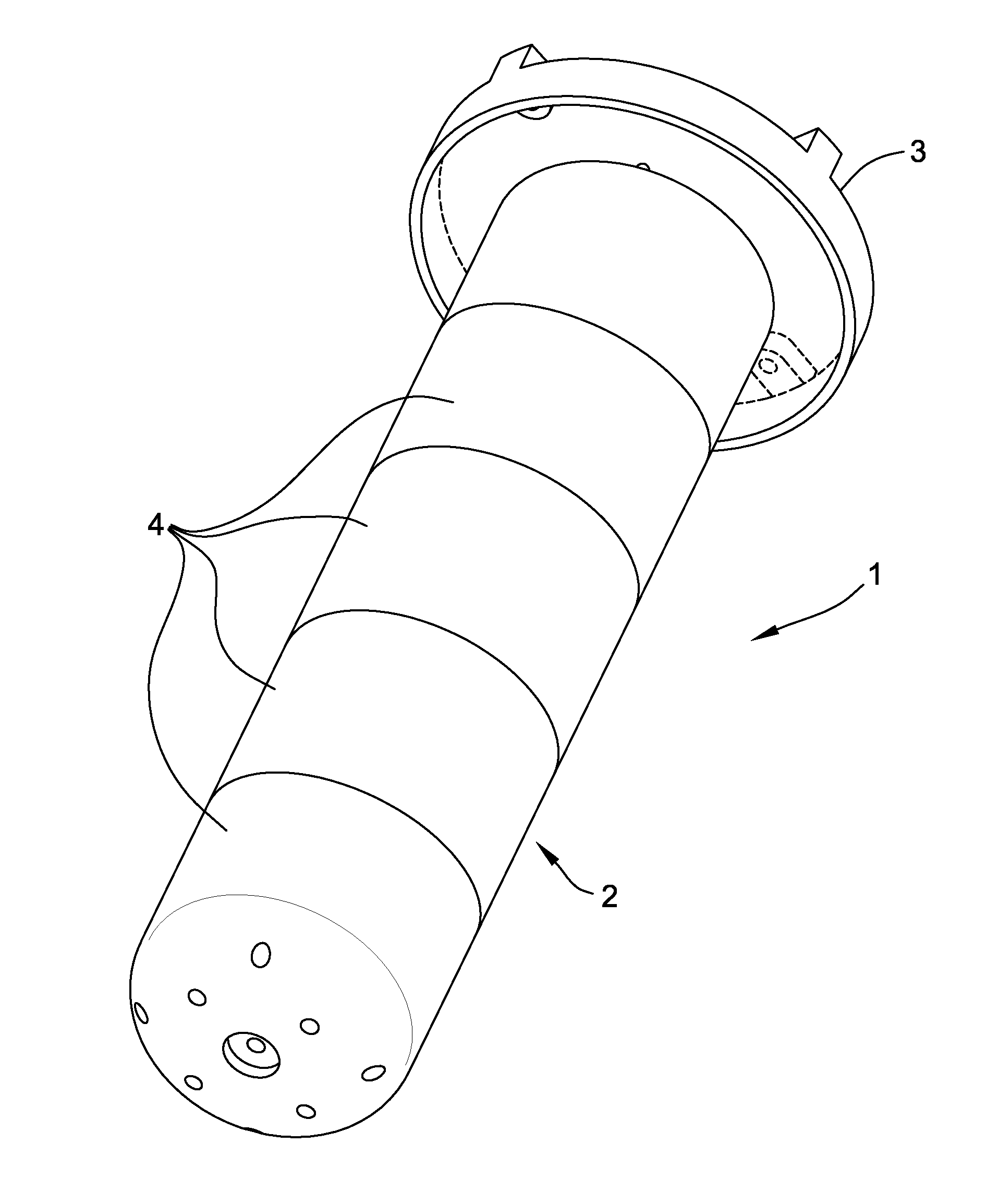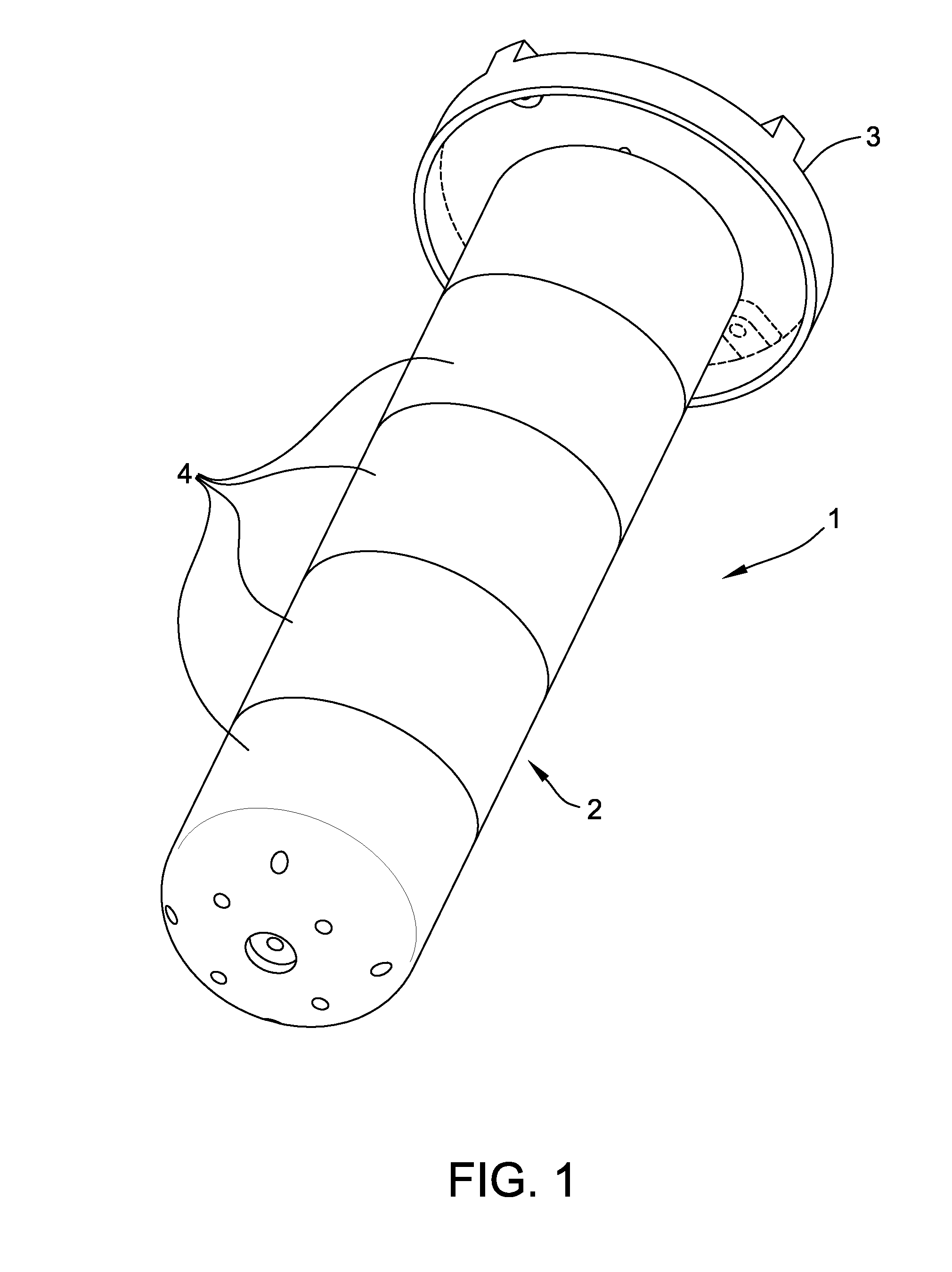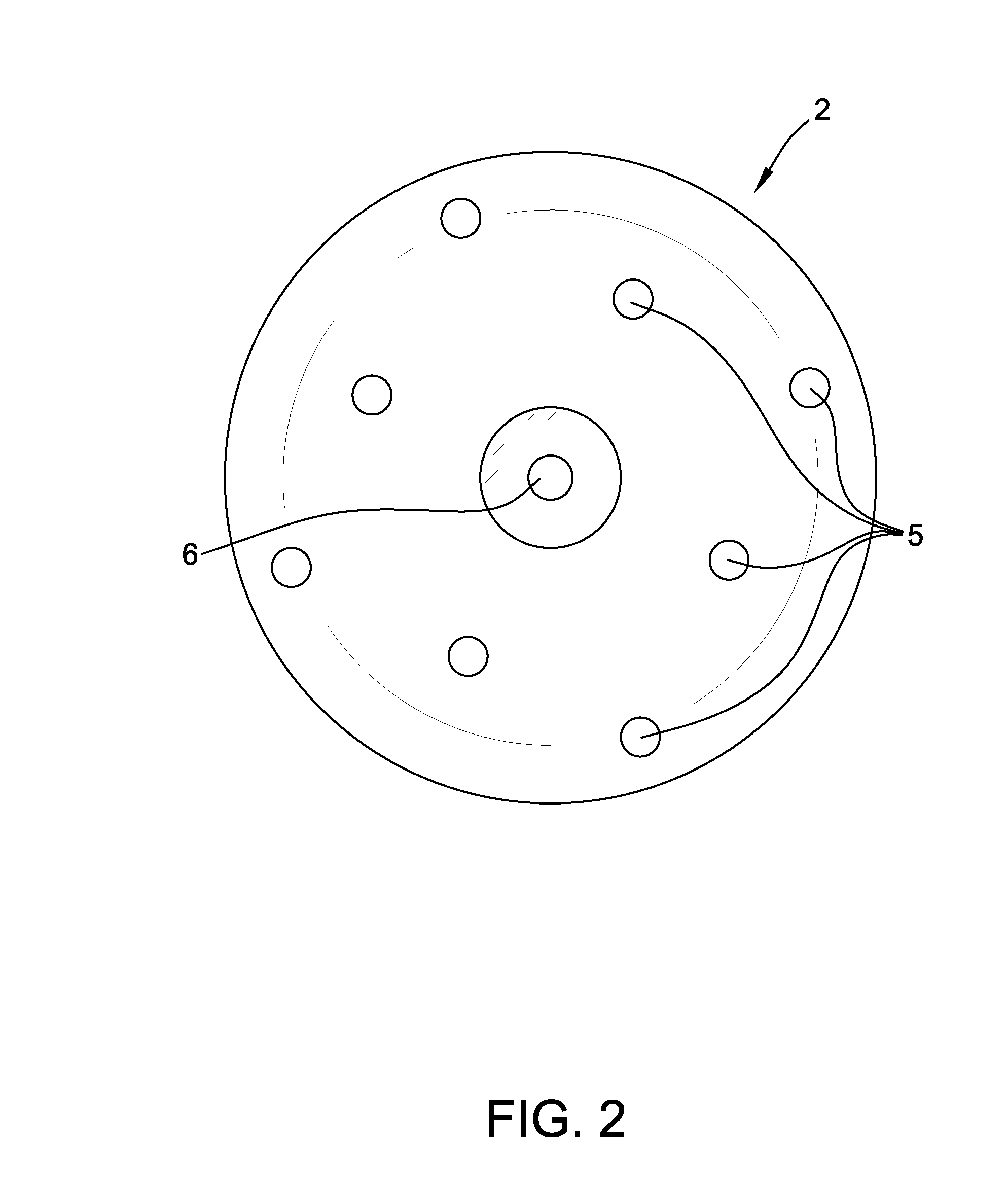Devices and methods for treatment of cancers
a cancer and brachytherapy technology, applied in the field of cancer brachytherapy treatment devices, can solve the problems of inpatient status and invasiveness, inconvenient operation, and inability to reach the abdominal wall,
- Summary
- Abstract
- Description
- Claims
- Application Information
AI Technical Summary
Benefits of technology
Problems solved by technology
Method used
Image
Examples
example 1
[0045]Methods
[0046]Forty three patients were treated with twice-daily outpatient-based HDR ISI brachytherapy using Ir-192. Thirty patients (70%) had vaginal lesions, 9 (21%) had vulvar lesions, 2 (5%) urethral, and 2 (5%) cervical. Histologies included 23 squamous cell carcinomas (53%), 13 adenocarcinomas (30%), 2 poorly differentiated carcinomas (5%), and one renal cell carcinoma, one sarcoma, one melanoma, one UPSC, and one polypoid malignant carcinoma. Thirty seven patients (86%) were treated with definitive intent. Three patients (7%) received treatment adjuvantly after surgical resection, and three patients (7%) received palliative local treatment. Thirty-four (79%) received external beam radiation prior to ISI, with a median dose of 50.4 Gy in 1.8 Gy fractions delivered to the primary lesion + / − local-regional lymph nodes. Sixteen patients (37%) received concurrent platinum-based chemotherapy. The apparatus used for delivering therapy included a plastic proximal template attac...
PUM
 Login to View More
Login to View More Abstract
Description
Claims
Application Information
 Login to View More
Login to View More - R&D
- Intellectual Property
- Life Sciences
- Materials
- Tech Scout
- Unparalleled Data Quality
- Higher Quality Content
- 60% Fewer Hallucinations
Browse by: Latest US Patents, China's latest patents, Technical Efficacy Thesaurus, Application Domain, Technology Topic, Popular Technical Reports.
© 2025 PatSnap. All rights reserved.Legal|Privacy policy|Modern Slavery Act Transparency Statement|Sitemap|About US| Contact US: help@patsnap.com



